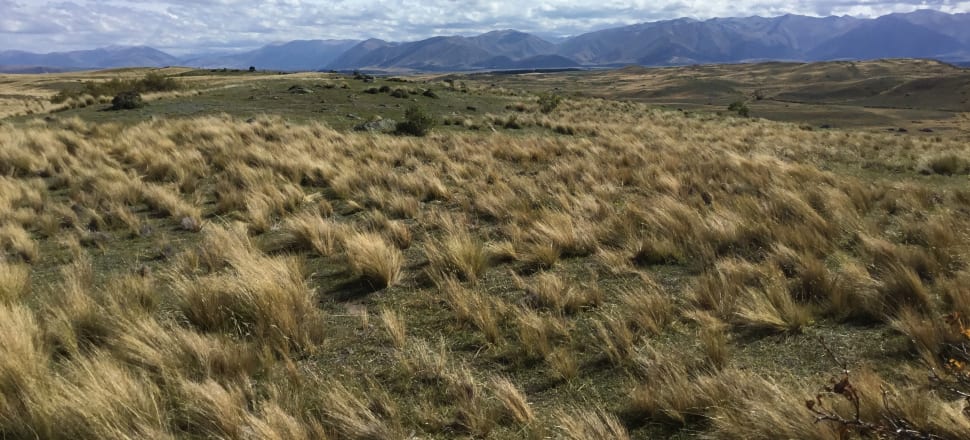
Will hundreds of consents for farm developments on Crown lease land be assessed properly? David Williams reports
Conservation experts and advocates worry that South Island high country landscapes will be blotted by inappropriate farm developments, after a rush of consent applications last year.
Last November, before tighter protections come into force, Land Information New Zealand (Linz) received 218 applications for discretionary farm activities on Crown pastoral leases – more than the total of the previous six months. (Activities include cropping or cultivating, clearing vegetation, constructing new buildings or fences, and spraying slopes.)
READ MORE: * Rush of farm applications beat deadline * A big change for the high country and the environment
Crown pastoral leases span 1.2 million hectares of the South Island, occupying some of New Zealand’s most picturesque high country land.
Lessees have certain rights and obligations, but for developments beyond grazing approval has to be sought from the Commissioner of Crown Lands, a government official sitting within Linz who reports straight to the minister.
A snapshot on the Linz website says it received 384 applications for activity on Crown pastoral land before November 17 last year – when new rules kicked in – of which 329 were active at the end of March.
Part of the approvals process is an assessment to consider how developments might affect the property’s inherent values – ecological, landscape and historical.
Last month, the veteran landscape expert Di Lucas, of Christchurch, posted her concerns to the webpage of the Institute of Landscape Architects, of which she’s a life member. (She didn’t want to comment for this story.)
Government agencies needed help assessing values in specific development proposals, she believed. “The statutes require that inherent landscape values are maintained and enhanced.”
Lucas, a ministerial appointee to the High Country Advisory Group, wanted to compile a list of suitably experienced landscape architects to ensure discretionary consent applications were properly assessed.
Prompted by her post, 18 experts sent bios to Linz. (Long-term, Lucas believes the agency should have in-house expertise.)
In an April 27 update, Lucas wrote: “A framework for assessing landscape values is being developed, and a discussion is imminent on making progress.”
She’s not the only one with concerns.
“It’s exactly the same situation with ecological assessments,” says Forest & Bird’s Nicky Snoyink, a manager in the conservation group’s Canterbury branch.
“It’s about the in-house expertise ... about the person making the decision, determining when a landscape expert is needed.”
Pastoral leases have hit the headlines in recent years, whether it’s approval of more intensive agriculture, or the controversial tenure review system being scrapped.
A 2019 report by Linz said Crown management of lease land was weighted towards farmers, and ecological advice for a decision was of “poor or variable quality”. It was, no doubt, a driver for the law changes that ushered in tougher environmental protections.
But before the new rules can really be tested, Linz is under pressure concerning landscape assessments under the old rules. It’s yet another high-stakes showdown in the high country.
“Have they got the right expertise inside the department to make that decision correctly?” – Nicky Snoyink
Asked about DoC’s obligations for assessing discretionary consents, and whether it can fulfil them, director of regulatory services Steve Taylor says: “When comments and recommendations do describe landscape as a value, we have either engaged a landscape architect or used landscape reports previously provided from a landscape specialist for the associated property.”
(That raises a question about the age and relevance of previous landscape reports.)
When a discretionary consent is provided, the first assessment is to identify if further expertise is required, Taylor says.
“DoC makes the assessments and determines what expertise is required and the most efficient and effective way of delivering that advice.”
Linz is required by law to consult with DoC on every discretionary application.
For applications received before November 17 last year, the Commissioner of Crown Lands must take into account the desirability of protecting the inherent values of the land, and in particular the inherent values of indigenous plants and animals, and natural ecosystems and landscape; and the desirability of making it easier to use the land concerned for farming purposes.
Sonya Wikitera, Linz’s head of Crown property, says: “This includes seeking further expert input when required and taking into account any mitigating actions recommended by DoC.
“As part of this process, DoC provides advice on all the inherent values that might be affected by an application. Where DoC considers it necessary, it obtains independent advice from inherent values experts, including landscape specialists, to inform its advice to us.”
The backlog of consent applications is being processed based on urgency, complexity, and whether lease visits or extra technical support are needed. “The Crown pastoral team are focused on processing these applications thoroughly.”
One applicant is Kate Scott, the high country chair of the Otago branch of Federated Farmers, who farms Rees Valley Station at the head of Lake Wakatipu.
She isn’t impressed.
“Apart from the acknowledgement receipt in November I’ve heard nothing since. Luckily none of my proposed fencing is that urgent, but I imagine for some people the delays will be more problematic.”
Given the Crown Pastoral Land Act reforms, a consent backlog isn’t surprising, Scott says. Preparation should have been made to “power up to process things as speedily as possible”, but she says this doesn’t seem to be the case.
Simon Williamson’s family used to run Birchwood Station, near Ōmārama, which was bought by the Nature Heritage Fund and is now part of the Ahuriri Conservation Park. He now farms Glenbrook Station, near Twizel.
Landscape architects must work constructively with lessees, Williamson says – “unlike DoC which, although they struggle to look after the vast amounts of land under their management, want more and more”.
Good outcomes are about partnerships, he says, “not Crown ownership”.
Snoyink, of Forest & Bird, is concerned that inexpert DoC staffers (the department hasn’t employed landscape architects since 1989) are determining if expert advice is needed.
Having to clear such a backlog of farm consent applications has Snoyink worried government agencies will try to cut corners. “We really don’t want them to do that. But they’ve said they would run a robust process for every consent so that’s what we expect them to do.”
She notes robust assessments require a site visit and peer review.
Lucas’s initiative to contact colleagues through the institute was “brilliant”, says Snoyink, who was glad many landscape architects expressed an interest in helping.
In an analogy that makes sense for the high country, she says: “We’ve brought the horse to the water, now we need it to drink.”







